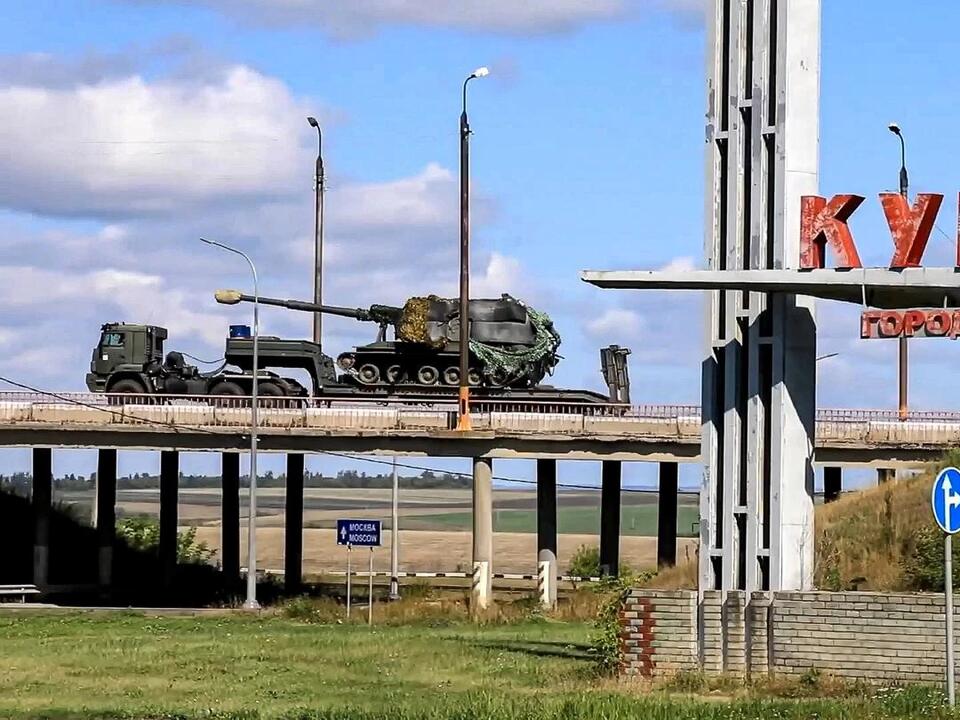Physical Address
304 North Cardinal St.
Dorchester Center, MA 02124
Physical Address
304 North Cardinal St.
Dorchester Center, MA 02124

After three weeks of conflict, Russian forces continue to struggle to displace Ukrainian troops from the Kursk region. This response marks an unexpectedly slow and subdued reaction to the first occupation of Russian territory since World War II.
The situation primarily reflects issues with Russian manpower and strategic priorities.
While the majority of Russia’s military resources are committed to offensives within Ukraine, the Kremlin appears to lack sufficient reserves to effectively drive out Ukrainian forces.
President Vladimir Putin has not indicated that he sees the Kursk incursions as a major threat, preferring to concentrate on the eastern region of Donbas, which remains his principal objective.
According to Tatiana Stanovaya from the Carnegie Russia Eurasia Center, “Putin’s focus is on the collapse of the Ukrainian state, which he believes would render any territorial control irrelevant.”
In the months following the initiation of a full-scale invasion in 2022, Putin proceeded with the illegal annexation of the Ukrainian regions of Donetsk, Luhansk, Zaporizhzhia, and Kherson. Securing these areas has since remained a high priority for the Russian leadership, with Putin demanding in June that Ukrainian forces withdraw from the territories they control as a prerequisite for any peace negotiations—an ultimatum that Ukraine has firmly rejected.
In efforts to address Ukraine’s incursion, Russia is attempting to allocate forces judiciously to avoid pulling units away from its ongoing operations in the Donbas. As articulated by Nigel Gould-Davies from the International Institute of Strategic Studies, “Russia currently judges that it can contain the threat on its own soil without compromising its most important goal in Ukraine.”
Despite Ukrainian forces advancing into Kursk on August 6, Russian troops continued their deliberate advance in and around the strategic city of Pokrovsk, indicating a lack of urgency regarding the situation in Kursk.
Nico Lange from the Center for European Policy Analysis pointed out that “Russia is very keen on continuing the attacks toward Pokrovsk and not diverting resources to Kursk.” Unlike the fortified positions in Pokrovsk, other areas of Donetsk still under Ukrainian control are comparatively less fortified, making them more susceptible to a Russian offensive should Pokrovsk fall.
In his communications regarding Kursk, Putin portrayed the Ukrainian incursion as an effort to hinder the Russian campaign in Donetsk, asserting that operations there are moving forward rapidly despite developments in Kursk.
As part of its pressure campaign on Ukraine, Russia has commenced a persistent barrage of long-range assaults targeting Ukrainian infrastructure. A significant attack on energy facilities recently involved over 200 missiles and drones, resulting in widespread power outages and revealing vulnerabilities within Ukraine’s air defenses, which are stretched thin between frontline troop protection and infrastructure security.
With an emphasis on securing Russia’s annexed regions, Putin has attempted to downplay the significance of Ukraine’s operations in Kursk.
According to Gould-Davies, rather than rallying citizens against this perceived threat, “the Kremlin is anxious to downplay the incursion.” State-controlled media have framed the attack as evidence of Ukraine’s aggression and justification for Russia’s actions since the invasion began on February 24, 2022.
Although Kursk residents may harbor frustration towards the Kremlin, Stanovaya emphasizes that this incident is unlikely to catalyze widespread social or political discontent among the broader population.
“While it’s certainly a blow to the Kremlin’s reputation, it is unlikely to spark a significant rise in social or political discontent among the population,” she noted.
As of now, Ukraine’s chief military officer, Gen. Oleksandr Syrskyi, claims that Ukrainian forces control nearly 1,300 square kilometers and approximately 100 settlements within the Kursk region. However, this assertion cannot be independently verified.
The dynamics in Kursk contrast with the relatively static combat conditions in Donetsk, allowing Ukrainian units to maneuver throughout the region without establishing permanent control over the settlements they claim.
Many observers contend that Russia lacks the coordination and resources necessary to effectively counter Ukraine’s maneuvers in Kursk. Ben Barry from the IISS commented on Moscow’s response, indicating that efforts appear limited to redeploying units from across Russia, including militia and irregular forces.
Previously, Putin had refrained from deploying conscripts in an effort to mitigate public discontent. Some conscripts stationed to guard the border in Kursk have become vulnerable to engagements with Ukraine’s experienced mechanized infantry units.
While the Kremlin has relied on volunteers enticed by competitive salaries to bolster its forces, this influx has diminished in recent months. Experts suggest that tens of thousands of troops would be needed to fully dislodge the estimated 10,000 Ukrainian forces making good use of the region’s dense forests.
Currently, Russia appears to prioritize containing Ukrainian advances by attempting to seal roadways and disrupt Kyiv’s logistics. However, the Ukrainian military has made strides by destroying vital bridges over the Seym River, complicating Russian supply lines and enhancing their operational leverage in the region.
Lange has projected that Ukrainian forces could establish buffer zones along the river’s banks, asserting, “I would expect the Ukrainians to find additional choke points for Russian logistics and infrastructure.”
While the capture of Russian territory has embarrassed the Kremlin, Ukraine faces considerable risks and challenges with this new strategy. Diverting experienced troops from the battlefront could overextend Ukraine’s smaller forces.
Such an overextension could lead to serious logistical issues for Ukrainian forces if they attempt to hold positions within Russian territory. Notably, any increase in supply lines would render them vulnerable to Russian targeting.
Ultimately, as Lange stated, “The Russian system is very hierarchical and stiff, so it always takes them a significant amount of time to adapt to a new situation.” Maintaining control in Kursk may become increasingly complicated for Ukraine, particularly if Russia responds with greater intensity.
Source: source names



